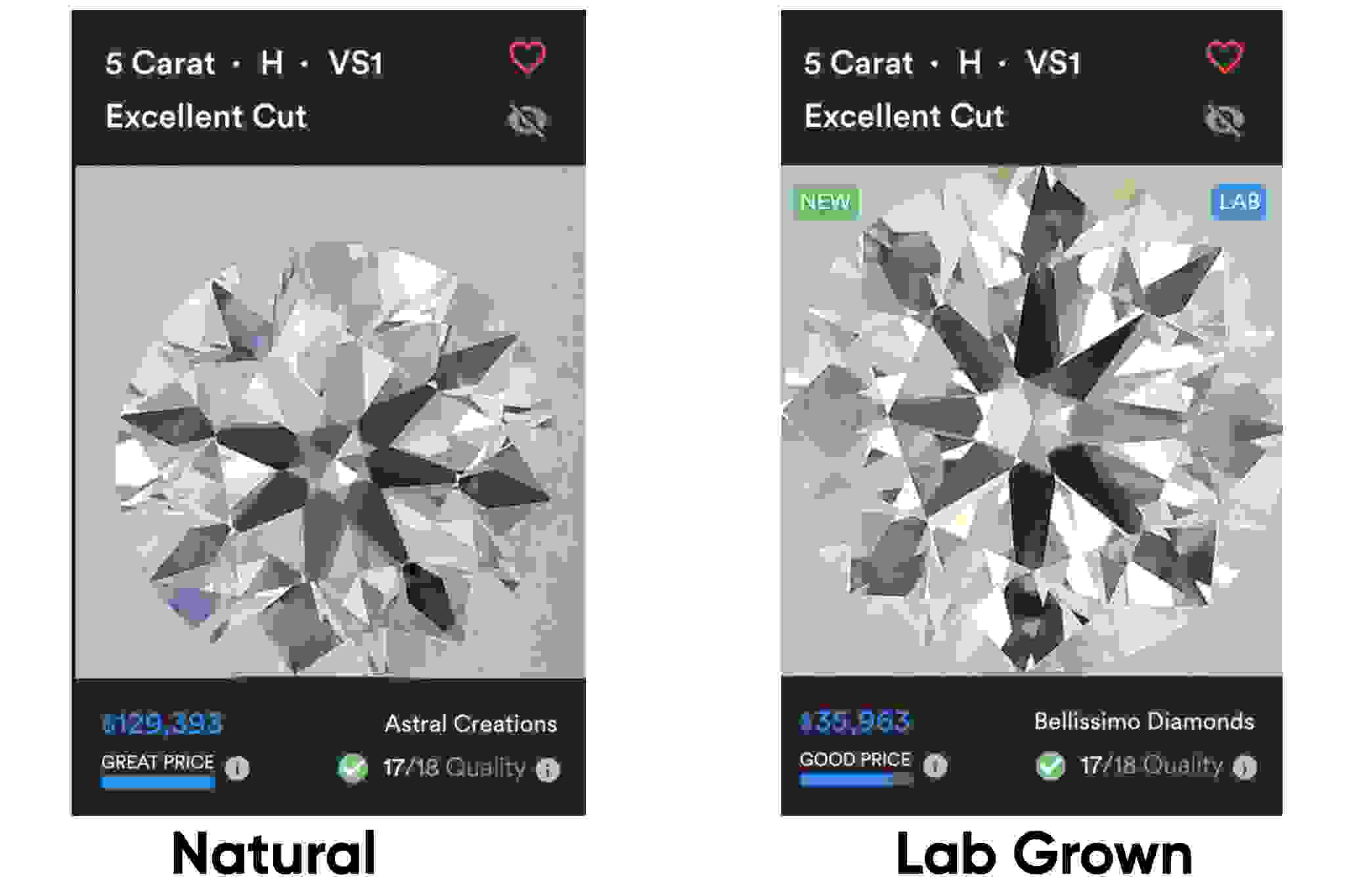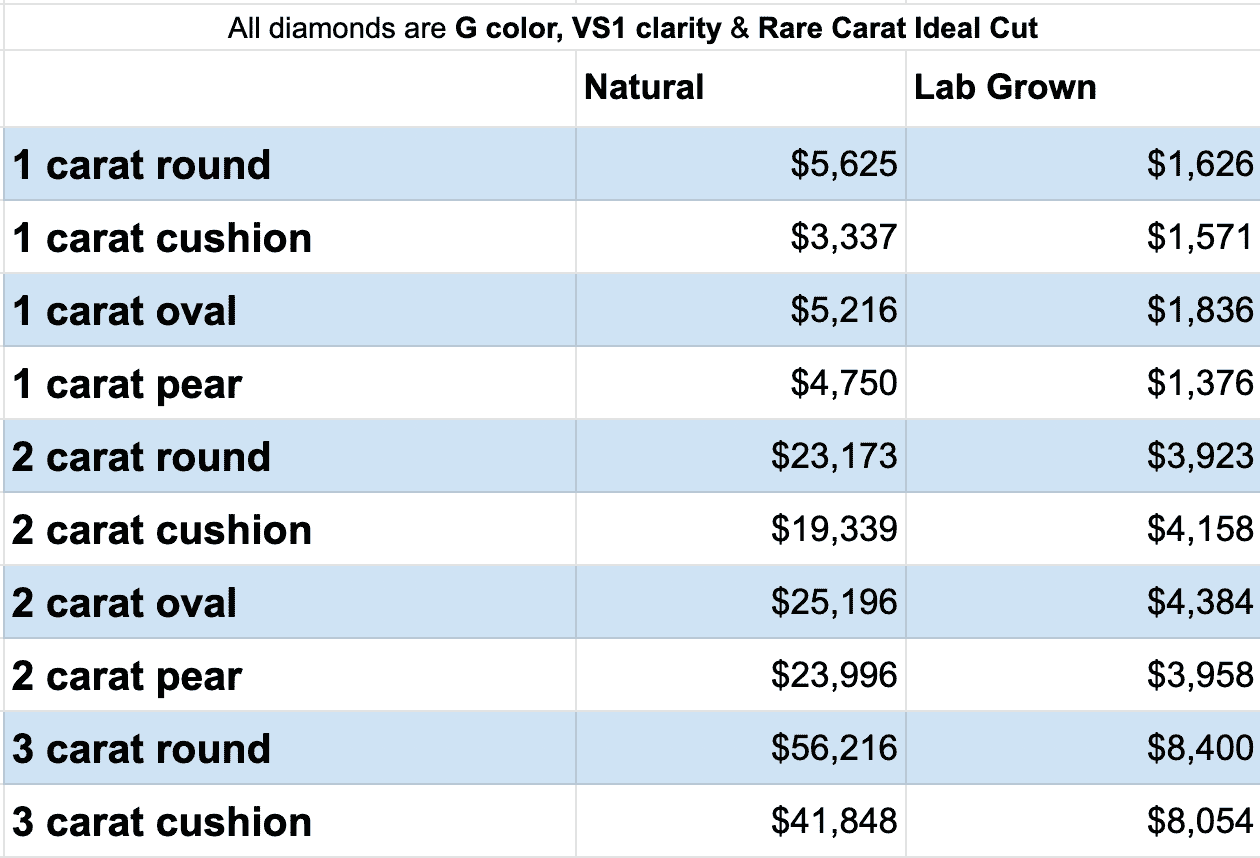Ever since lab created diamonds have come on the scene and become a major player in the diamond industry, people have always had second thoughts about them. So what is the difference between the two?
Lab vs Natural Diamonds - The Defining: "Real"
Real is a rather imprecise term to use in this case. Calling diamonds real, in this case, might actually be a bit misleading because lab grown diamonds are real as well, just grown differently. A better term to describe them would be earth mined. In a chemical and physical sense, there is no difference between the two. They are both composed of pure carbon and possess the unique atomic structure that gives diamond's signature brilliance and hardness.
Any diamond that was mined from the earth and transformed into a sparkly masterpiece is all-natural and "real".
Lab Grown vs Natural Diamond - Defining: Lab Grown
As the name implies any diamonds that are grown in a lab are referred to as lab grown. There are two main ways diamonds are made in the labs: HPHT and CVD. The HPHT (high pressure and high temperature) method reproduces the natural conditions under which diamonds are formed in nature. The CVD (chemical vapor deposition) method isolates carbon and snows it down on a seed crystal kinda like magic.
What sets them apart from natural diamonds is that lab diamonds require much less time to create. In nature, the diamonds form deep underneath the earth and stay there for millions of years. If the explosive rocket of the deep, the kimberlite rock finally shows up and picks up this cache of diamonds, it will be another few tens of thousands years to travel from the depth to the surface. Then one day on the surface a huge explosion and slurry of hot magma will signal the arrival of the diamonds on the surface.
In the labs that time frame is shortened to only meager weeks. The source carbon is fed into the chamber. After a few weeks of stable and steady growth, a diamond is ready to be faceted into a gem. Take the finished product out of the chamber. No explosion, no magma, no fuss.
Visual Difference between Lab Grown vs Natural Diamonds:

It would not be wrong to assume that lab created diamonds will look somewhat different than earth mined ones. If you get assigned two projects and have the deadline of two years and two minutes respectively. You would bet that they would end up looking very different.

But in reality, if you compare one earth mined and one lab created diamond of the same color and clarity, there is no difference. In fact, lab created diamonds have reached such fantastic qualities that even professional diamond graders without sophisticated pieces of equipment will have no chance of telling them apart.
How does anyone tell Lab vs Real Diamonds apart?
While it is impossible by looking at the diamonds alone, gemological laboratories such as GIA and IGI have figured out reliable ways to test for them. With sophisticated pieces of equipment such as fluorescence patterns and infrared absorption spectroscopy, gemological labs can reliably separate LGD diamonds from naturally mined ones.
In short, if you are ever in doubt about a diamond's origin. Send it to a gemological laboratory and let the professionals handle it from there.
Are lab diamonds as good as real diamonds?
Are lab diamonds as good as real diamonds? Absolutely! Lab-grown diamonds possess the same chemical composition, brilliance, and hardness as natural diamonds. They are "real" diamonds, just grown in a controlled lab environment. With advancements in technology, it has become difficult even for professionals to distinguish between lab-grown and natural diamonds without specialized equipment
Can you tell the difference between lab made diamonds and real?
In most cases, it is extremely difficult to visually tell the difference between lab-grown diamonds and natural diamonds. Lab-grown diamonds possess the same physical, chemical, and optical properties as natural diamonds, making them nearly indistinguishable to the naked eye. As I mentioned in my previous paragraph even a professional diamond grader without specialized equipment may struggle to differentiate between the two.
However, gemological laboratories such as GIA and IGI have developed sophisticated testing methods, such as fluorescence patterns and infrared absorption spectroscopy, to reliably identify lab-grown diamonds. So, while the average person may not be able to tell the difference, experts can determine the origin of a diamond through laboratory testing.
Do lab diamonds get GIA graded?
Yes, lab-grown diamonds can be certified by the Gemological Institute of America (GIA) or other reputable gemological laboratories. GIA, a well-known and respected authority in diamond grading, offers grading reports for both natural and lab-grown diamonds. The GIA grading report for lab-grown diamonds includes information about the diamond's color, clarity, cut, carat weight, and other relevant characteristics. This certification provides assurance and transparency regarding the quality and specifications of the lab-grown diamond.
Lab vs Real Diamonds Price Difference:
This is probably the most important difference between them all and one that you have been waiting for. So, how much cheaper are laboratory created diamonds compared to earth mined? It depends on what quality the diamonds you are comparing.
Below is a Price Chart Comparing Real Diamonds vs. Lab Diamonds

Just like in nature larger and better quality diamonds are harder to come by. So if you compare the higher end earth mined diamonds with higher end lab created diamonds, the gap will be smaller. How small? A D color internally flawless 1 ct earth mined diamond is approximately 2.5 times more expensive than a lab diamond (not really a small gap). For more common color and clarity the gap widens significantly. For two G VS2 diamonds, the gap is about 4 times.
However, with more and more companies putting their effort into producing better and more lab created diamonds more efficiently, I believe the gap will only widen in the future. No doubt more technological advancement and competition in the future will drive down the prices for lab diamonds even further.

